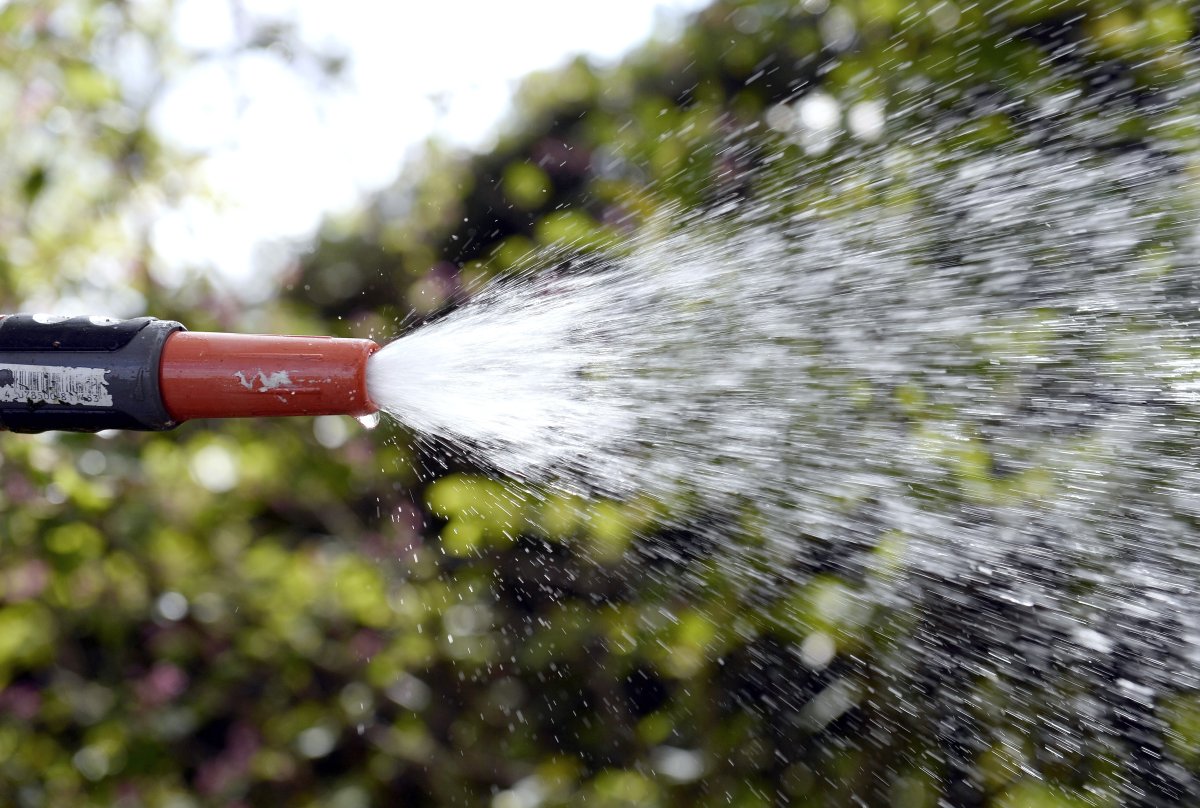Getting scalded is the most common injury among kids, child safety experts say. And it often happens in ways you least expect.

“Burns come in so many different ways,” said Carol Horvitz, the executive director of the Children’s Burn Foundation in California.
Just this past month a nine-month-old Arizona boy suffered second-degree burns to nearly a third of his body, after his mom accidentally scalded him with a garden hose that’d been sitting out in the sun.
She was using it to fill a kiddie pool, not realizing how hot the water in the hose had gotten. When her son (who was sitting by the pool) got splashed in the face and started to cry, his mom assumed he was just mad.
“I didn’t think that it was burning him,” Dominique Woodger told Phoenix station KNXV-TV.
Then she realized his skin was peeling.
“He had blisters all over the right side.”
“A child’s skin is much thinner than an adult’s skin,” Horvitz explained. “So a child can get deeper burns with lower temperatures and less exposure time than an adult.”
READ MORE: A child can drown 24 hours after being in water — What parents should know
Doctors told Woodger her son will be okay, but she’s warning other parents to be careful — and touch the water before they spray or let their kids near it.
Other burn risks
It’s not just garden hoses to watch out for. Parents should test the temperature of a car seat before putting their child in one. Horvitz said they can become scorching if left in a hot car.
READ MORE: Texas father charged in death of infant daughter left in hot minivan for 3 hours
“Anything that’s left outside that can heat up is a potential threat,” she warned.
That includes concrete and sand, which can scald a child’s feet.
Children can also burn themselves by touching the stove or pulling the cord of an iron or other household items that heat up.
WATCH: Family warns parents to watch young ones around exercise equipment after daughter burns hand

Most common way kids get burned
Hot liquids like coffee, tea and soup are the most frequent sources of a scalding, according to Horvitz.
Parents will place a cup of tea or coffee in a stroller’s cup holder and when the stroller hits a bump, “it can spill on the child or they pull it down out of your hand,” she said.
Cups of noodles taken out of the microwave are another top “offender.”
“People put it in the microwave — you don’t know how hot it really is — the child puts it on their lap, and it spills.”
WATCH: More ways children have been severely burned
How to prevent your child from getting scalded
Eighty per cent of kids’ burns are preventable, the Children’s Burn Foundation says.
Here are some tips from the organization on how to keep your child safe:
Be vigilant in the kitchen:
- Never hold baby while cooking, drinking hot beverages or eating hot foods.
- Use spill-resistant travel mugs for all hot beverages.
- Avoid passing hot food or drinks over babies.
- Do not leave hot drinks or liquids within reach of children.
- Avoid using tablecloths to prevent hot liquids/food from being pulled over or spilled by your child.
- Never use a microwave to heat a bottle.
- Heat baby’s bottles and food in warm water. Always test the temperature of heated bottles and food before feeding your infant.
- Do not leave large pots on the floor to cool.
- Secure your child in a play pen or high chair during meal preparation.
Prevent bath time burns:
- Never leave your baby alone in the tub.
- Set your hot water heater for 48 degrees.
- When filling tub, run cold water first, then add hot water as needed and stir.
- Always test bath temperature with your hand or bath thermometer before putting your baby in the water.
- Face child away from faucets toward the back of the tub when bathing to prevent the child from accidently turning on the hot water.
- Place anti-scald devices on faucets, which turn off the water when it gets too hot.
- Keep bathroom appliances like curling irons away from your baby’s reach.
Make your home burn safe:
- Install smoke alarms on every floor, inside each bedroom and outside sleeping areas. Test smoke alarms monthly and replace batteries at least once per year.
- Install carbon monoxide detectors in your home.
- Create a fire escape plan and practice the plan twice per year.
- Keep all electrical and extension cords away from babies.
- Do not leave burning candles unattended.
- Cover unused electrical outlets with plug safety covers.
- Have a fire extinguisher easily accessible in your home, and learn how to use it before you need it.
- Store all harmful items like cleaning products, paints and chemicals in locked cabinets or closets.
- Install safety screens in front of fireplace openings to prevent contact by your baby.
Be mindful of sun and other outdoor dangers:
- Keep your baby out of direct sunlight at all times.
- After six months, use sunscreen made for infant skin when outside.
- Make sure your baby wears shoes outdoors on hot, sunny days to avoid direct contact to bare feet with hot concrete and playground equipment.
- Always keep your baby away from your BBQ grill.




Comments